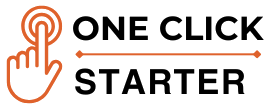How to Create a Lean Business Plan in Under an Hour
Launching a business doesn’t need to start with a 50-page document. In fact, most successful startups begin with a lean business plan—a focused, one-page blueprint that gets your ideas out of your head and into action. And the best part? You can create it in under an hour.
In this guide, we’ll show you how to craft a clear, actionable business plan fast, using just the essentials.
What is a Lean Business Plan?
A lean business plan is a streamlined version of a traditional business plan. It skips the fluff and focuses on core elements that help you clarify your idea, stay focused, and communicate your vision with others—whether that’s a partner, investor, or team member.
What You’ll Need (Estimated Time: 60 Minutes)
A quiet space or focused environment
A notepad, Google Doc, or business planning template (Lean Canvas works great)
60 minutes of honest, creative thinking
The 9 Key Sections of Your Lean Plan (And How to Fill Them In)
1. Problem (5 mins)
List the top 1–3 problems your audience faces.
Example: Freelancers struggle to find affordable tools to manage their finances.
2. Solution (5 mins)
Describe your product or service and how it solves the problem.
Example: A simple, all-in-one finance dashboard designed for freelancers.
3. Target Market (10 mins)
Define who your customer is. Be specific.
Example: Freelance graphic designers aged 25–40 in the U.S., earning $30k–$80k/year.
4. Unique Value Proposition (5 mins)
Explain why your offering is different and worth noticing.
Example: The only budget tool created by freelancers, for freelancers.
5. Channels (5 mins)
How will you reach your audience? Think: website, social media, partnerships, etc.
Example: Instagram, content marketing, affiliate partnerships with freelance platforms.
6. Revenue Streams (5 mins)
How will you make money?
Example: Monthly subscriptions, one-time upgrades, affiliate links.
7. Cost Structure (5 mins)
What are your main expenses?
Example: Hosting, development, marketing software, freelance support.
8. Key Metrics (5 mins)
What will you track to know you’re succeeding?
Example: Active users, monthly recurring revenue (MRR), churn rate.
9. Unfair Advantage (5 mins)
What do you have that others can’t easily copy?
Example: A personal brand with a built-in following, insider knowledge of freelancing pain points.

